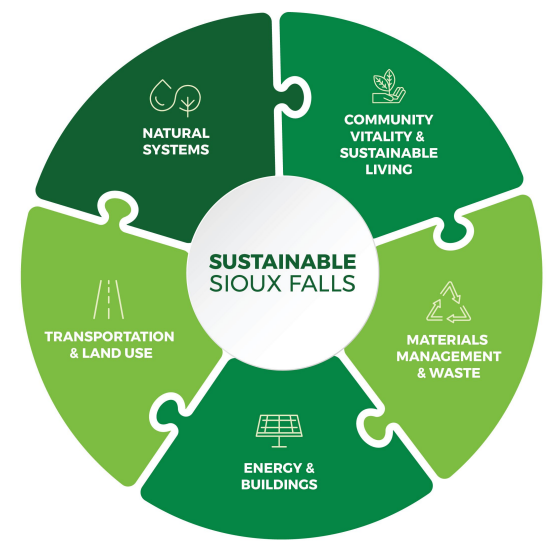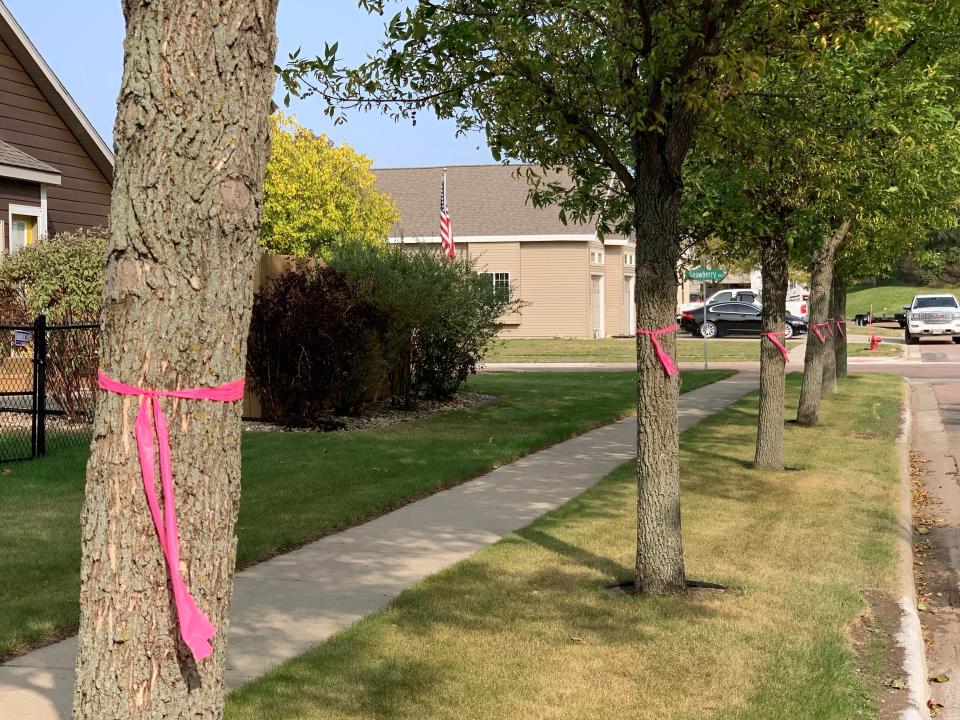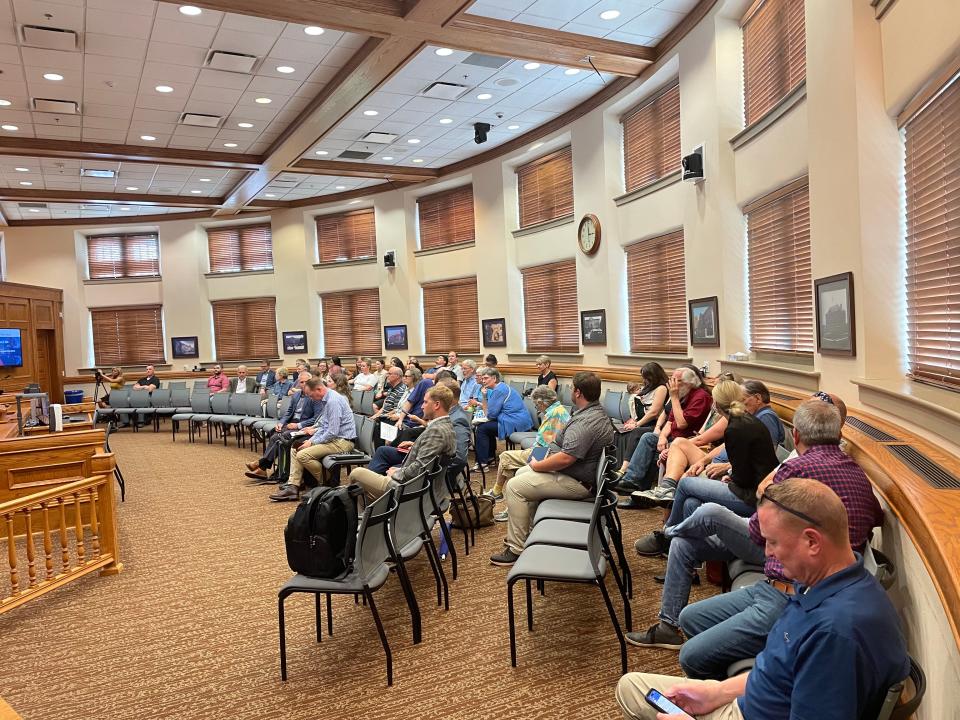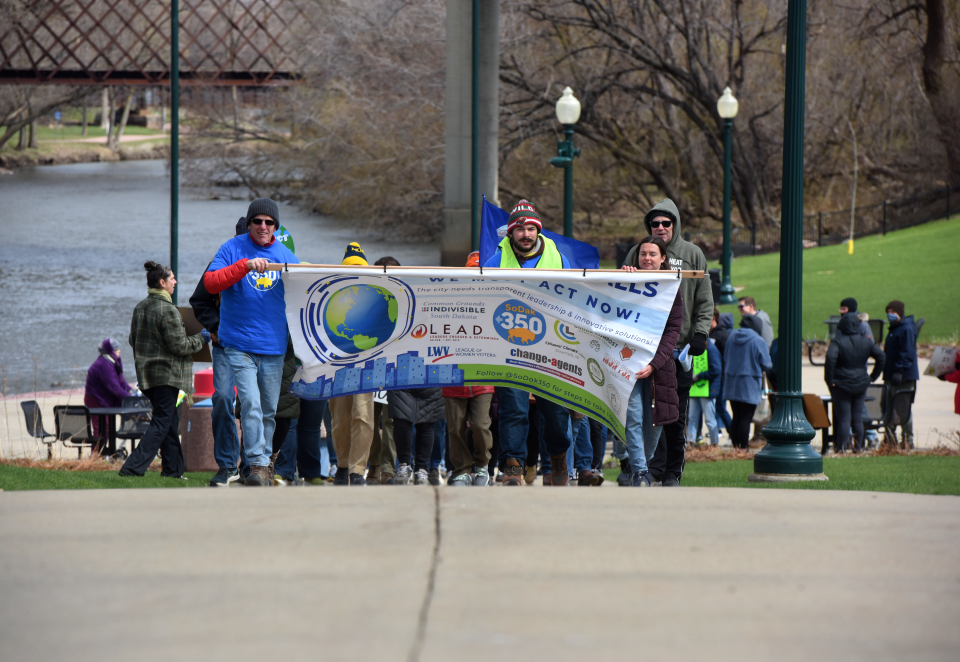How the Sioux Falls Sustainability plan changed since early 2022
The Sioux Falls Sustainability framework put in place within the last two weeks is certainly different from the Sustainability and Climate Action Plan the city first proposed in early 2022.
Most notably are the goals to reduce community and local government operations emissions by 45% by the year 2030, and to reach net-zero emissions by 2050. But those not the only changes the document has seen since it was introduced.
The initial plan received some pushback, which led to a delay while more stakeholders were added to the steering committee that helped guide the plan, eventually coming to a December draft of 71 actions. The committee was then informed in February the plan would be replaced with a framework that is now in place, which requires no council action.

Environmental groups, including some members of the steering committee that helped guide the plan, have said the changes "removed all meaningful, concrete goals and accountability measures" from a plan that started out strong.
Mayor Paul TenHaken says the changes came after members of the city's building and energy industries said some of what had been planned wasn't realistic, and that the lack of a goal in the new framework doesn't mean it can't still be worked toward.
So, what exactly has changed? Here's an in-depth look at the differences between the December draft of the Sustainable Sioux Falls plan and the framework now in place, broken down by its five focus areas.
Natural Systems
The focus area’s first goal is improving water quality and increasing water conservation. While the framework maintains strategies such as including green infrastructure on city-owned properties and using landscaping more resistant to drought, the new document adds the moves should be taken “where practical,” and language about decreasing the amount of mowed grass has been removed.
Additionally, an item that looked to “examine and adjust city standards, codes, practices, and programs to better support and incentivize water conservation” has been changed to “explore additional initiatives for water conservation.”
More: 'I changed my mind': TenHaken says original goals for sustainability plan went too far
The original document pushed for a city-supported community effort to provide education and technical assistance toward increasing green infrastructure and low-impact development, while encouraging and incentivizing such moves, including by developing supporting policy.
The only remaining language in the framework on that issue is “provide education on best practices for low-impact development.”

Much of the focus area’s second goal, which is to strengthen the city’s urban forest, remains the same from the December draft, although an item that would have assessed tree requirements for new construction and commercial properties has been removed.
The focus area’s third goal is to protect and restore biodiversity. One item was a collaborative effort to “conserve and protect habitat and wetlands in areas of new development and reduce habitat fragmentation and degradation, and create new habitat spaces that encourage wildlife, provide community benefit, and allow for educational opportunities.”
The framework removes much of that language, stating only that there should be an effort to “identify possible sites for new habitat spaces that encourage wildlife, provide community benefit, and allow for educational opportunities.”
Materials Management and Waste
The focus area’s only goal is to reduce waste, and many of the strategies from the December draft are unchanged in the framework, though some have been combined.
Two of those items were “collaborate with other jurisdictions, materials recovery facilities, haulers, and other entities to increase waste diversion and decrease waste brought to the regional landfill” and “increase construction and demolition (C&D) recovery, recycling, and diversion,” which were combined into a single item in the framework that now says the strategy will be to “explore opportunities” to take those actions.
Community Vitality and Sustainable Living
The focus area’s first goal is to expand and enhance local food production and equitable access. The December draft called for a city-supported community effort to “create a coalition of community partners that focuses on maximizing local food production and access.”
The only remnant of that strategy in the framework is as part of a public-private collaboration to educate the public on growing food in yards, community gardens and rooftop gardens and promote locally-grown food, with the language “continue to expand local food production sites.”
More: Sioux Falls rejects $1M EPA climate grant, saying it would 'take away focus' from its plans
The framework removes a city-supported community effort to increase urban agriculture, neighborhood orchards, food forests and community gardens on public and private lands, as well as a community-driven item to increase distribution of leftover food to community members.

Another community-driven strategy is made more specific by the framework: An item on expanding local food access to residents on nutrition assistance programs had the phrase “explore opportunities” removed.
The second goal, which has changed from “develop a culture of sustainability” to “expand upon a culture of conservation and sustainability,” saw several changes in the framework.
It removes city actions such as developing a sustainability ambassador program and creating a sustainability advisory board, and combines items calling for integration of the Sustainable Sioux Falls plan into the city’s strategy, planning and budget decisions, alongside developing and implementing a “sustainable procurement policy,” into one item that reads “continue exploring additional opportunities for sustainable procurement and incorporating sustainability practices into capital and budget planning.”
A city-supported community event on incorporating sustainability and environmental education into school curriculums has also been removed.
An added item is “provide how-to resources and/or technical support for businesses and organizations that want to incorporate conservation and sustainable business practices,” which comes from a now-removed portion of the December draft.
The third goal, to improve resilience and public health, maintains a strategy to establish a park or green space within a half mile of every resident, though adding that the city will “work toward” that goal.
A “climate vulnerability assessment” that was called for in the December draft has also become a “community resilience and preparedness assessment” in the framework.
Energy and Buildings
An item on utilizing at least the 2018 energy code for new municipal construction and significant renovations was changed to “explore feasibility of utilizing the energy code” for those projects.
Similarly, another item on setting a “green, high-performance building policy” for new municipal construction and significant renovations was replaced with “explore feasibility of including high-performance, low-energy best practices in municipal buildings.”
More: Open letter to TenHaken says Sioux Falls' sustainability plan stripped of any 'meaningful' goals
Strategies for increasing clean energy that powers city facilities and developing plans for improving energy efficiency in existing city facilities were both combined into one item in the framework, reading “evaluate ways to improve energy efficiency and increase clean energy at city facilities.”
No longer in the framework are city-supported community efforts on educating the community about how to reduce greenhouse gas emissions, pursuing an update of the Sioux Falls energy code and developing approaches to allow for and increase use of renewable energy.

And an item on encouraging electric vehicle readiness in new buildings through incentives and education was replaced with one that calls for a community effort to “explore opportunities to implement electric vehicle readiness measures guided by EV readiness study results to keep Sioux Falls competitive.”
Transportation and Land Use
The first goal of the focus area is to “decarbonize transportation through multimodal solutions,” to which the framework adds “while maintaining consumer choice.”
At least one strategy has been completely removed, which called for the establishment of a teleworking policy for the city.
Items calling for the use of lessons from an electric vehicle pilot program in the city’s electric vehicle planning process, and using sustainable biofuels in the city’s fleet vehicles, were also combined into a single strategy. That strategy reads the city will “use lessons learned from the city’s electric vehicle and sustainable biofuels pilot programs as considerations for planning of fleet upgrades and replacements.”
It’s unclear if that includes the city’s bus system, though an item on piloting electric transit is no longer present in the framework, nor is one on using street intersection design to improve efficiency and reduce vehicle idling.
Two other city-supported community efforts in the December draft were to develop an electric vehicle readiness plan and to work with businesses and multi-family housing developments to increase the availability of electric vehicle charging infrastructure.
The framework has combined those items into “commission an electric vehicle readiness study to better understand electric transportation in the community and work collaboratively to explore opportunities to keep Sioux Falls competitive and current on consumer trends.”
In the focus area’s second goal, increasing sustainable land use, language on supporting dense, low-impact, infill and mixed-use development remains, though two specific items were removed. Those items include allowing for narrower street widths in developments and updating off-street parking requirements to determine ways to reduce surface parking.
Sustainable Economy
A sixth focus area, Sustainable Economy, was removed entirely from the framework. Strategies in that focus area included promoting sustainable organizations and businesses and educating on the economic impacts of climate change.
This article originally appeared on Sioux Falls Argus Leader: Here are the most noteable changes to Sioux Falls' new sustainability framework

